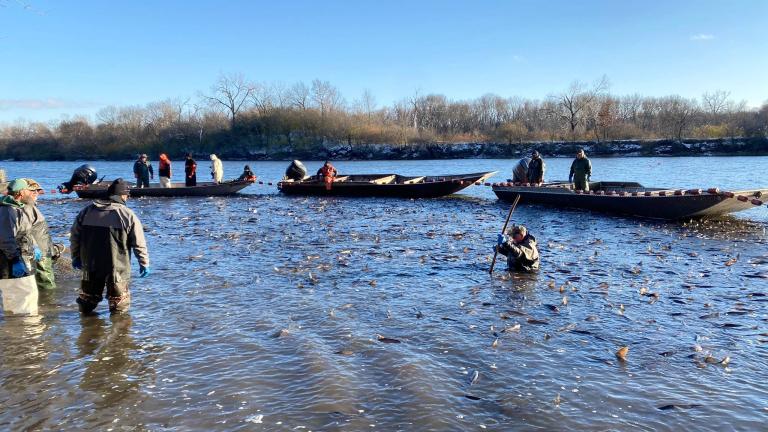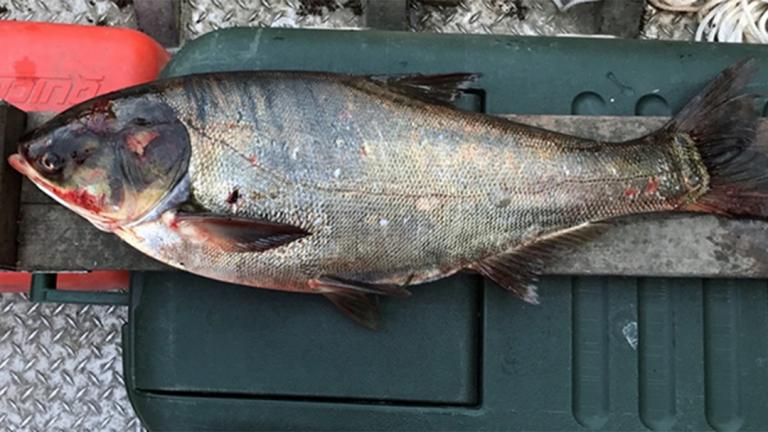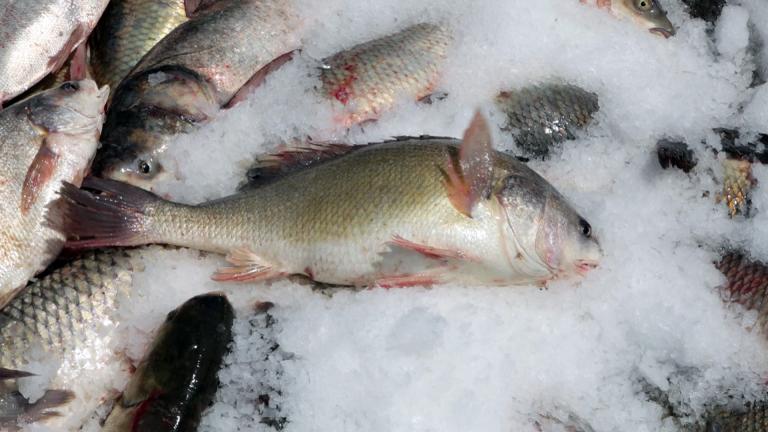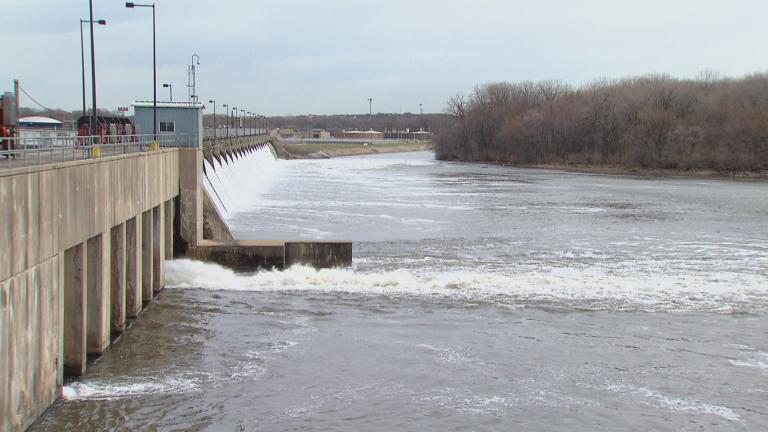There have been legal battles and millions of dollars spent trying to keep Asian carp away from Chicago area waterways. The invasive fish pose a major threat to the Great Lakes ecosystem and fishing industry. But Asian carp are already around.
They are being called "The Humboldt Park three." A trio of giant Bighead Asian Carp, ranging in weight from 34 to 62 pounds. They were found in Humboldt Park in one of the lagoons.
For all the efforts aimed at keeping them away from Lake Michigan, these invaders are already in the neighborhood.
“Over the years, we've known there've been bighead carp in these lagoons,” says John Rogner of the Illinois Department of Natural Resources. “We thought ‘too close for comfort,’ so we wanted to make sure we systematically removed these fish.”
The Humboldt Park Three were caught by the Illinois Department of Natural Resources, and are now part of the Shedd's "Invasive Species" exhibit - aimed at teaching the public about the threat carp and other non-native marine life pose to the Great Lakes.
“What can we do to learn about these animals, how can we keep the native plants and animals protected, and how do we play a role?” says Roger Germann of the Shedd Aquarium.
But if public officials think they have the carp cornered, they'll have to think again.
Asian carp have been caught in ponds and lagoons throughout the Chicago Park District, not just here in Humboldt Park. In fact, there may be dozens of them. We know they've probably been here for years. But it begs the obvious question: how on earth did they get here?
“Well, we know they didn't fly there, and we know they didn't swim there because these are not connected to any waterways,” says Rogner. “We know it was some human-mediated event.”
It's more than likely they came here as minnows. Theory one: They were inadvertently used as bait. The IDNR sampled local shops like Henry's Sport and Bait in Bridgeport.
“We've been inspected, but nothing's ever been found,” says owner Tom Palmissano. “All the minnows we sell are certified.”
In fact, all area bait shops have turned up clean so far.
Theory two: The IDNR and Chicago Park District inadvertently introduced the carp themselves when they were restocking the lagoons with catfish.
“Some of these fish came from southern fish farms, it could be that there were Asian carp minnows accidentally mixed in with other species and they were dumped in when the catfish were dumped in. We'll never fully know, but it's all we can come up with,” says Rogner.
Palmissano says anglers have been bringing locally caught Asian carp into his store for years, wondering what to do with it.
"They're like the cockroaches of the water...they lay on the bottom, don't move, and get big and fat. The ones we've had brought in our store here are 50 pounds," he said.
He says the first thing he tells the anglers: keep them away from any other waterways.
Rogner says the human factor has complicated the fight against Asian carp. While electronic barriers and other feats of engineering keep them from swimming up the river system into the lake, it's harder to police people.
“Obviously someone could deliberately introduce fish, transfer them from one water body to the other...it's illegal to do that, but not hard to do," he said.
But, Rogner says that even if a few Asian carp pop up in Lake Michigan, it doesn't mean all is lost.
“Fairly significant numbers of them have to be introduced before they have a population size sufficient to reproduce in the Great Lakes, so a fish here, a fish there, they are the proverbial small fish in a big pond, and it's not enough to get them established," he said.
For now, the invaders swim for visitors at the Shedd - as officials ponder how to stay one stroke ahead.







